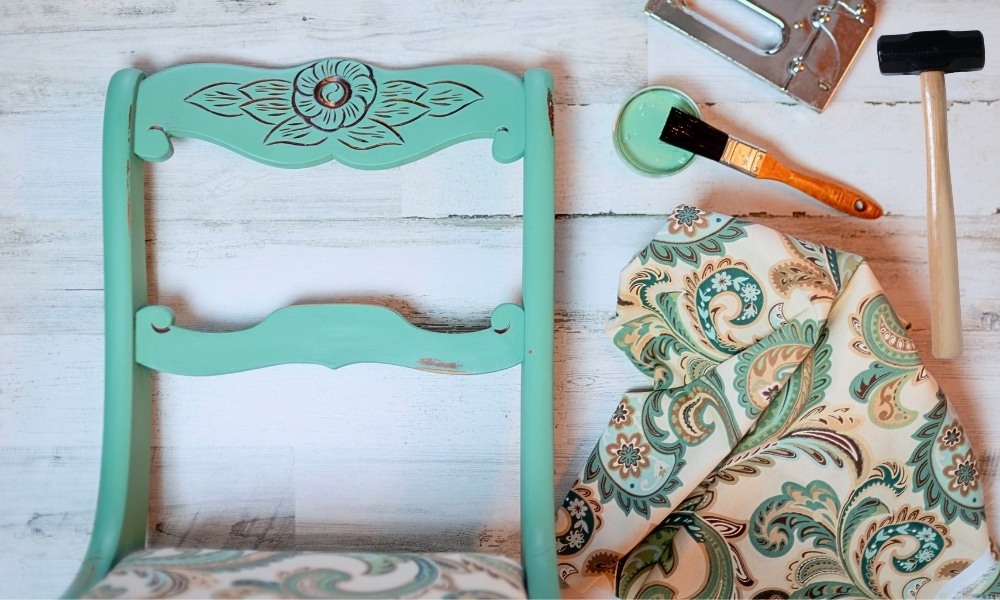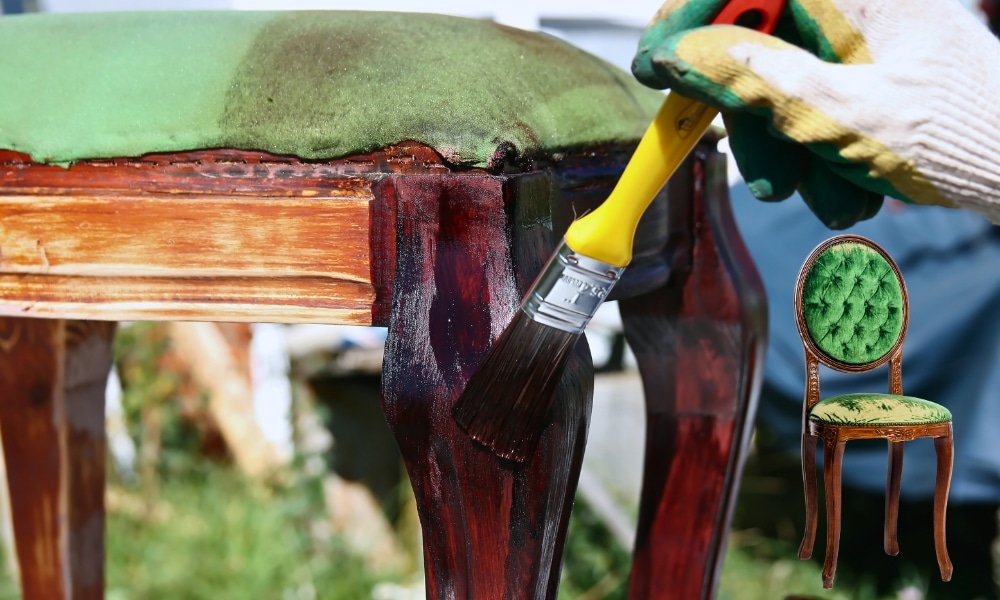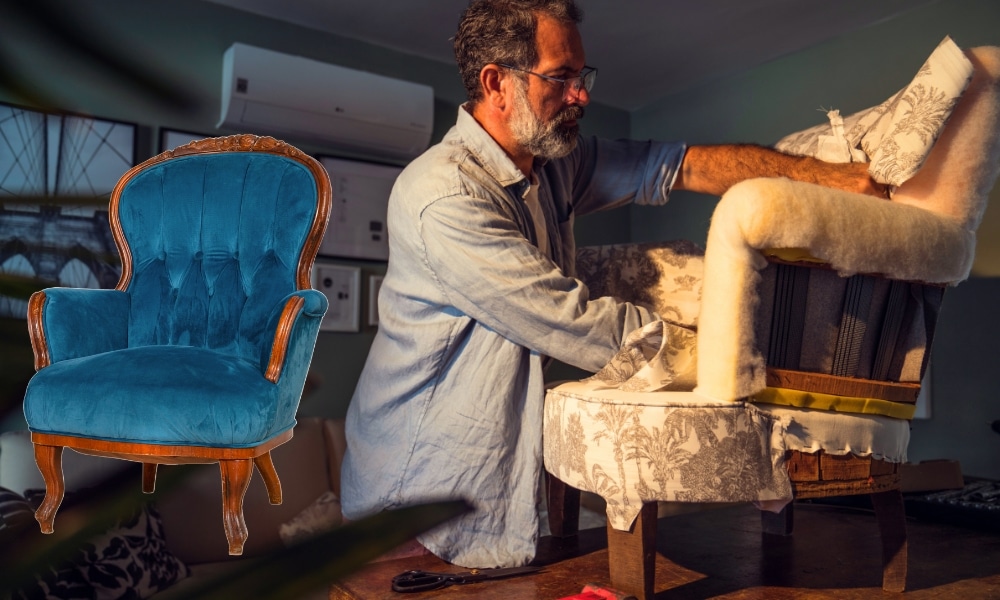Upcycling old furniture has become a significant movement in Australia, offering a sustainable and creative approach to interior design. Individuals reduce waste by repurposing and transforming outdated pieces and crafting unique items that reflect personal style. This guide delves into the benefits, methods, and inspirations for upcycling furniture in Australia, providing the knowledge to embark on your sustainable furniture makeover.

On this page
The rise of upcycling furniture in Australia
Australians increasingly embrace sustainable practices, and upcycling furniture is a prime example of this shift. According to recent surveys, many Australians actively seek ways to reduce waste and make eco-friendly home choices. Upcycling furniture aligns perfectly with this ethos, giving old pieces a new lease on life while minimising our environmental impact.
Why choose upcycling?
Beyond its environmental benefits, upcycling offers a plethora of advantages:
- Uniqueness: Create one-of-a-kind pieces that reflect your style and add character to your home.
- Cost-effectiveness: Save money by giving existing furniture a makeover instead of buying new, often expensive items.
- Sustainability: Sustainability in waste management involves preventing furniture from entering landfills, contributing to a more circular and environmentally responsible economy.
- Creative expression: Unleash your inner artist and enjoy the satisfaction of transforming something old into something beautiful.
Did you know Energy Matters is Australia’s largest renewable news, blog and educational resource? Subscribe to Energy Matters’ weekly newsletter and keep updated even with incentives, rebates and recommended solar product offers.
Getting started with upcycling furniture
Embarking on an upcycling project can be both rewarding and environmentally friendly. Here’s a step-by-step guide to help you begin:
1. Choosing the right piece
Look for sturdy furniture with good bones. Solid wood pieces are ideal for upcycling due to their durability and versatility.
2. Assess and plan
Before diving in, evaluate the piece for necessary repairs. Then, decide on the look you want to achieve—whether it’s a rustic charm, modern sleekness, or a vibrant statement.
3. Preparation
Remove any hardware like handles or knobs. Clean the furniture thoroughly to remove dirt and grime. Sand the surfaces to create a smooth base for painting or staining.
Preparing your workspace: Set up a well-ventilated area with enough space to work comfortably. Cover your workspace with drop cloths to protect it from paint or other materials.
Gathering your tools and materials: You’ll need essential tools such as sandpaper, paintbrushes, primer, paint, and sealant, as well as any additional materials specific to your project, such as new hardware or fabric.
4 . Choose your finish
- Painting: A fresh coat of paint can dramatically change the appearance of furniture. For a durable finish, consider using water-based paints like Dulux Aquanamel. Chalk paints are a popular choice for a vintage or distressed look.
- Staining: Staining is an excellent option to showcase the natural wood grain. Products like Feast Watson’s range of stains can enhance the timber’s appearance.
5. Add unique touches
Incorporate new hardware, apply decorative stencils, or add fabric elements to personalise the piece further. Lining drawers with patterned wallpaper or fabric can add a delightful surprise when opened.
6. Cleaning and prepping the furniture
Thoroughly clean the piece to remove dirt, dust, and grime. Sand the surface to remove old finishes and create a smooth base for painting or other treatments.
Seal and protect: Once your design is complete, apply a sealant to protect the finish and ensure longevity.

Overcoming common barriers
While upcycling is rewarding, some common challenges include:
- Lack of time: Start with small projects that can be completed in a few hours, such as painting a picture frame or reupholstering a chair seat.
- Limited skills: There are numerous workshops and online tutorials available to help you develop the necessary skills. Bunnings, for instance, offers DIY workshops across the country.
- Finding materials: Be patient and persistent in your search. Regular visits to thrift stores, tip shops, and online marketplaces can yield great finds.
Inspiration and upcycling furniture ideas
The possibilities in upcycling are vast. Here are some creative techniques and upcycling furniture ideas to inspire you:
- Painting: A fresh coat of paint can completely transform a piece of furniture. Experiment with different colours, finishes, and techniques, such as distressing or stencilling.
- Upholstery: Reupholster old chairs or sofas with fresh fabric to give them a new look. This can be a great way to update outdated pieces and add a pop of colour or pattern to your space.
- Repurposing: Think outside the box and repurpose old furniture into something entirely new. For example, turn an old dresser into a bathroom vanity or a vintage ladder into a bookshelf.
- Adding new hardware: Replacing old knobs, handles, or hinges with new ones can make a significant difference in the overall look of a piece.
- Combining materials: Mix and match different materials to create unique and interesting pieces. For instance, combine wood and metal or fabric and paint.
Here are some creative examples to spark your imagination:
- Bedside tables: Transform old crates or wooden boxes into rustic bedside tables by stacking them and adding a coat of paint or stain.
- Coffee tables: To create a unique coffee table, repurpose an old door by adding legs. Glass can be placed on top for a smooth surface.
- Storage solutions: Use vintage ladders as shelving units. Simply lean the ladder against a wall and place wooden planks across the rungs to create shelves.
- Outdoor furniture: Pallets can be transformed into outdoor seating or tables. Sand them down, add cushions, and have a cost-effective patio set.

Upcycling furniture ideas for every room
- Living room: Transform an old coffee table with a fresh coat of paint or add new legs to a vintage armchair.
- Bedroom: Repurpose an old dresser into a stylish bedside table or create a unique headboard from reclaimed wood.
- Dining room: Give a vintage dining table a modern makeover with a new stain or paint finish or reupholster dining chairs with vibrant fabric.
- Kitchen: Upcycle old cabinets with new paint and hardware, or create a custom kitchen island from reclaimed materials.
- Outdoor spaces: Turn old pallets into outdoor furniture or repurpose vintage crates into planters.
Where to find furniture for upcycling
- Op shops and thrift stores: These are treasure troves for finding unique and affordable furniture for upcycling
- Garage sales and markets: Keep an eye out for garage sales and markets in your area, where you can often find great deals on old furniture.
- Online marketplaces: Websites like Gumtree and Facebook Marketplace are great places to find people giving away or selling old furniture.
- Kerbside collections: Check your local council’s regulations and look for furniture left out for the Kerbside collection.
Sustainable choices for upcycling
When upcycling furniture, it’s essential to make sustainable choices to minimise your environmental impact:
- Choose eco-friendly paints: Opt for low-volatile organic compound (VOC) or no-VOC paints to reduce harmful emissions.
- Use sustainable materials: Look for reclaimed wood, recycled fabrics, and other eco-friendly materials for your projects.
- Dispose of waste responsibly: Properly dispose of waste materials, such as old paint cans or fabric scraps, to avoid polluting the environment.
Sources: Bunnings Warehouse, Feast Watson, Home Beautiful
A rewarding journey to a sustainable future
Each piece of furniture repurposed is one less item in the landfill and a step towards reducing the demand for new resources. Moreover, upcycling fosters creativity and allows for personalised expression in home décor.
Upcycling old furniture in Australia is more than just a trend; it’s a movement towards sustainability and individuality. By repurposing old furniture, you can create unique pieces that reflect your style while positively impacting the environment and contributing to a more sustainable future. So, gather your tools, unleash your creativity, and start your sustainable furniture makeover today!
Take the next step towards a sustainable future from Energy Matters
The future of solar power is beyond our skies—are we ready to harness its full potential?
Energy Matters is here to guide you every step of the way. Energy Matters is one of Australia’s most trusted solar quotes due to our high customer satisfaction and industry recommendations. Our team of solar experts can help you get up to 3 FREE solar quotes from pre-qualified and vetted solar firms in your area.















































